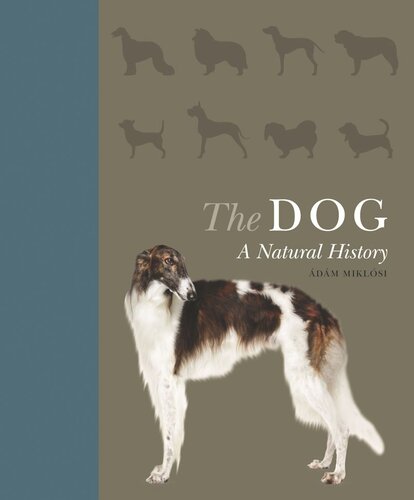

Most ebook files are in PDF format, so you can easily read them using various software such as Foxit Reader or directly on the Google Chrome browser.
Some ebook files are released by publishers in other formats such as .awz, .mobi, .epub, .fb2, etc. You may need to install specific software to read these formats on mobile/PC, such as Calibre.
Please read the tutorial at this link: https://ebookbell.com/faq
We offer FREE conversion to the popular formats you request; however, this may take some time. Therefore, right after payment, please email us, and we will try to provide the service as quickly as possible.
For some exceptional file formats or broken links (if any), please refrain from opening any disputes. Instead, email us first, and we will try to assist within a maximum of 6 hours.
EbookBell Team

5.0
50 reviewsAn accessible and richly illustrated introduction to the natural history of dogs—from evolution, anatomy, cognition, and behavior to the relationship between dogs and humans
As one of the oldest domesticated species, selectively bred over millennia to possess specific behaviors and physical characteristics, the dog enjoys a unique relationship with humans. More than any other animal, dogs are attuned to human behavior and emotions, and accordingly play a range of roles in society, from police and military work to sensory and emotional support. Selective breeding has led to the development of more than three hundred breeds that, despite vast differences, still belong to a single species, Canis familiaris.
The Dog is an accessible, richly illustrated, and comprehensive introduction to the fascinating natural history and scientific understanding of this beloved species. Ádám Miklósi, a leading authority on dogs, provides an appealing overview of dogs' evolution and ecology; anatomy and biology; behavior and society; sensing, thinking, and personality; and connections to humans.
Illustrated with some 250 color photographs, The Dog begins with an introductory overview followed by an exploration of the dog's prehistoric origins, including current research about where and when canine domestication first began. The book proceeds to examine dogs' biology and behavior, paying particular attention to the physiological and psychological aspects of the ways dogs see, hear, and smell, and how they communicate with other dogs and with humans. The book also describes how dogs learn about their physical and social environments and the ways they form attachments to humans. The book ends with a section showcasing a select number of dog breeds to illustrate their amazing physical variety.
Beautifully designed and filled with surprising facts and insights, this book will delight anyone who loves dogs and wants to understand them better.